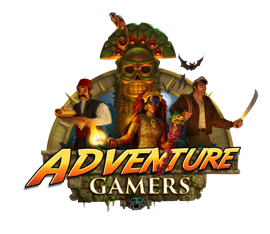Review for Lost Records: Bloom & Rage - Tape 1
Life is Strange may continue in name, but it’s clear that Lost Records: Bloom & Rage – Tape 1 is the spiritual sequel to the first two titles in that series. Don’t Nod were the original developers before moving onto other things, including other adventure games such as Twin Mirror and Tell Me Why. This new title, however, fits somewhat within the template of that earlier series, being focused on the relationships between teenagers – and having a touch of the supernatural amidst the real-life drama. What’s being reviewed here is just the first half of Lost Record’s adventure, with the other half to release in April. It could be the case that the second half cements this as a near-perfect continuation of Don’t Nods legacy. But so far, Lost Records appears to be settling for a "deeply admirable effort."
The plot superficially might also seem a little familiar in the way it shifts between the present and a nostalgia-tinged past. Swann is the lead, a socially anxious forty-something woman who is drawn back from peaceful isolation to her rural American hometown that is fraught with memories. Most of these memories involve the mid-1990s and a group of four closely knit, misfit teenage girls, who were all members of the extremely underground band: Bloom & Rage. They also, despite their joyous connections, swore that they would never see each other again. It seems like the set-up for a Stephen King story, yet the tale being spun is less about scares and symbolism than depicting realistic relationships.
For a game like this to work it needs decent writing, and particularly in this one, given that there appear to be no world-threatening stakes. This is a story about getting to know this ensemble cast, of caring about them not just when there’s something spooky but when they’re simply milling about. The characters have much to offer in terms of their idiosyncrasies, passions, and fears. They aren’t throwing out a polished quip every moment but are human instead. This willingness to engage with the prosaic feels so rare in any medium, and it's what makes the world’s peppering of incidental dialogue a constant pleasure to overhear.
It’s a deliberately paced tale, with some of the significant dramas being low-key activities like making a home in an abandoned shack. The writers have the confidence and understanding to dwell on these events, and to recognise that the minutiae of life – the excitement of making your own decisions, no matter how distant from adult concerns – can be life-changing for young people. Many of these activities are overlaid with reflections from the modern day, too, as the characters recall the intensity of their emotions. It’s an immensely clever approach, nudging the player into reminiscence rather than leaving them feeling antsy for action or disconnected from childish enthusiasm.
A major ongoing task is recording these events on Swann’s camcorder, given she’s a budding filmmaker, which also plays a major role in making players more than passive observers. It seems a little trite initially, given there’s not much room for creativity, and that the camera’s existence appears to be a cause for time-filling collectible hunting. However, it’s surprising and gratifying as to how much filming makes the characters feel alive. Recording a character might mean watching them bopping along to a song, crossing a log bridge, or chewing things over in the corner of a room. The snippets of film that result are accompanied by Swann’s insights, which are interesting enough, but what’s most compelling is the ultimate sense that you’ve shared adventures with friends.
Unsurprisingly, there has been plenty of craft lavished on the look of the game. It is visually stunning, though less due to technological prowess than incredible art design. The original Life is Strange has remained visually pleasing a decade later thanks to a painterly aesthetic, and this approach is carried over somewhat – even if the result is superficially much more realistic. Characters are more distinctive and less anonymous than in reality, yet also have a variety of shapes and blemishes. This stylisation fits with the perfect burnt-orange sunsets, richly blue night-times, and the sense of a heightened "take" on life and its imperfections.
This time around, though, music is more thematic than a massive contributor to the game’s mood, with the character focus meaning that voice acting is what stands out in its soundscape. All of the voice actors are, without exception, deeply impressive. There is never the sense that youth or age are crudely imitated. Swann’s voice actor, Olivia Lepore, undoubtedly has the most challenging role in trying to capture that character’s constant anxiety. The end result could easily have been irritatingly affected but is – as per all of the actors’ work – endearing and human.
However, sometimes everything is too neatly arranged. An early false note is struck when Swann ventures to enjoy the sights of the woods by herself. The lighting, crystalline water, and menagerie of animals are so perfect that the game resembles an assault of unearned sentiments. There are other moments where this distancing viewpoint – the frustration and apathy in being told how to feel – threatens proceedings again. This usually occurs in under-baked interactions: for example, being forced to take an unimaginative set of recordings or to repeatedly press a button to fake participation in a montage. The lack of meaningful accomplishments takes players away from the world, and positions them instead as semi-passive observers of a sentimental illusion.
Still, the story largely avoids presenting too twee a reflection of youth because it mostly isn’t montages, but instead a dive into the small things that really matter when you’re trying to find a place in the world. However, it is perhaps a little too focused on the joy of friendship, ignoring that for many children this plays such a small, often underwhelming, part of life. Many children's and teenagers’ reality includes the concern that they are unable to make meaningful connections, and lack the tools to express themselves to any of the people they might deem the closest to them. A more emotionally textured tale would make Lost Records’ world even more compelling, and the encroaching drama less like a standard plot device.
Don’t Nod has, however, made an approach to choices that at least feels more in keeping with life itself. Life is Strange telegraphed most of its choices, and wrapped decision-making up in the game mechanic of rewinding time. This time around it’s sometimes unclear if there’s a morally correct approach – and often vague as to whether a decision will have major repercussions. It was particularly refreshing to find out by the tape’s end that relationships had developed in somewhat surprising ways, and that I hadn’t been able to simply brute-force a romantic relationship into being. That character dynamics are more than just an easy-to-follow spreadsheet gives more of an impetus to start again at a later date, without the boring inevitability that I’ll easily end up with my choice of partner.
Lost Records: Bloom & Rage – Tape 1 is a very promising start that, in its ensemble cast, is uniquely effective. Many narrative adventures feel impressive due to the experiences and themes they present, rather than because of rich, realistic, and memorable characters. It’s a reflection of an intricately crafted production that the four very grounded personalities in Lost Records are as distinctive as the likes of Kate Walker and April Ryan, protagonists with grand destinies and globetrotting adventures. There is absolutely no doubt that I’ll be coming back to this story when Tape 2 releases, and I do already care about these characters. It’s just a shame that, at least so far, the developers don’t seem willing to stimulate players' emotions, even if spectacular work has been done to create a uniquely involving fantasy of childhood.
WHERE CAN I DOWNLOAD Lost Records: Bloom & Rage
Lost Records: Bloom & Rage is available at:
We get a small commission from any game you buy through these links (except Steam).Our Verdict:
Lost Records: Bloom & Rage – Tape 1 is a beautiful story with characters who are easy to care for. It’s a promising start to an adventure that already feels unique, yet unfortunately isn’t willing to challenge the emotions of its players.




























